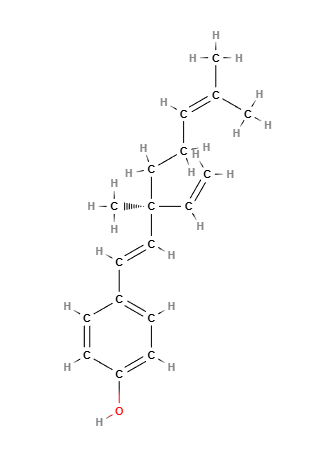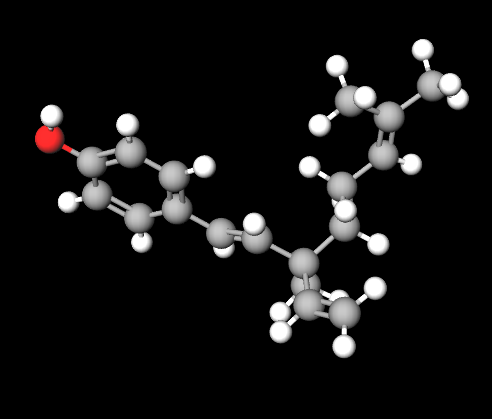Bakuchiol is a natural compound extracted from the seeds and leaves of the Psoralea corylifolia plant, belonging to the Fabaceae family. This compound is valued for its beneficial properties, making it popular in various applications, particularly in the fields of cosmetics and personal care.
Chemical Composition and Structure
Bakuchiol is a meroterpene, a class of organic compounds with a unique chemical structure that shares similarities with retinoids. However, unlike traditional retinoids, Bakuchiol is not derived from vitamin A but still provides similar benefits for the skin.
Physical Properties
Bakuchiol typically appears as a pale yellow to yellow liquid with an oily consistency. It is insoluble in water but soluble in oils and organic solvents.
Production Process
The production of Bakuchiol involves several steps:
Harvesting and Selection: The seeds and leaves of the Psoralea corylifolia plant are harvested and selected for quality.
Cleaning: The harvested plant material is thoroughly cleaned to remove dirt and contaminants.
Extraction: The cleaned plant material is subjected to an extraction process, typically using organic solvents, to obtain the extract containing Bakuchiol.
Purification: The crude extract is purified to isolate Bakuchiol from unwanted components.
Packaging: The final product is packaged under controlled conditions to ensure stability and purity.
Applications
- Cosmetics: In the cosmetics industry, Bakuchiol is valued for its anti-aging, antioxidant, and soothing properties. It is commonly included in formulations of creams, serums, and lotions to improve skin elasticity, reduce wrinkles, and even out skin tone (1).
- Personal Care: Bakuchiol is used in various personal care products such as moisturizers, skincare products, and facial oils for its regenerating and calming properties.
Environmental and Safety Considerations
Environmental Impact: The production of Bakuchiol generally has a low environmental impact, especially when sustainable harvesting practices are employed. The use of natural solvents and eco-friendly extraction processes minimizes the release of harmful chemicals into the environment.
Safety: Bakuchiol is considered safe for topical use in the concentrations typically employed in consumer products. However, it is essential to ensure that the compound is free from contaminants and complies with regulatory standards. Allergic reactions are rare but cannot be excluded.
Cosmetics - INCI Functions
- Antimicrobial agent. This ingredient is able to suppress or inhibit the growth and replication of a broad spectrum of microorganisms such as bacteria, fungi and viruses by making the stratum corneum temporarily bactericidal and fungicidal.
- Antioxidant agent. Ingredient that counteracts oxidative stress and prevents cell damage. Free radicals, pathological inflammatory processes, reactive nitrogen species and reactive oxygen species are responsible for the ageing process and many diseases caused by oxidation.
- Skin conditioning agent - Emollient. Emollients have the characteristic of enhancing the skin barrier through a source of exogenous lipids that adhere to the skin, improving barrier properties by filling gaps in intercorneocyte clusters to improve hydration while protecting against inflammation. In practice, they have the ability to create a barrier that prevents transepidermal water loss. Emollients are described as degreasing or refreshing additives that improve the lipid content of the upper layers of the skin by preventing degreasing and drying of the skin. The problem with emollients is that many have a strong lipophilic character and are identified as occlusive ingredients; they are oily and fatty materials that remain on the skin surface and reduce transepidermal water loss. In cosmetics, emollients and moisturisers are often considered synonymous with humectants and occlusives.
- Skin conditioning agent. It is the mainstay of topical skin treatment as it has the function of restoring, increasing or improving skin tolerance to external factors, including melanocyte tolerance. The most important function of the conditioning agent is to prevent skin dehydration, but the subject is rather complex and involves emollients and humectants that can be added in the formulation.
 |  |
Molecular Formula C18H24O
Molecular Weight 256.4 g/mol
CAS 10309-37-2
UNII OT12HJU3AR
EC Number 685-515-4
Bibliografia__________________________________________________________________________
(1) Dhaliwal S, Rybak I, Ellis SR, Notay M, Trivedi M, Burney W, Vaughn AR, Nguyen M, Reiter P, Bosanac S, Yan H, Foolad N, Sivamani RK. Prospective, randomized, double-blind assessment of topical bakuchiol and retinol for facial photoageing. Br J Dermatol. 2019 Feb;180(2):289-296. doi: 10.1111/bjd.16918.
Puyana C, Chandan N, Tsoukas M. Applications of bakuchiol in dermatology: Systematic review of the literature. J Cosmet Dermatol. 2022 Dec;21(12):6636-6643. doi: 10.1111/jocd.15420.
![]() Bakuchiol
Bakuchiol 



